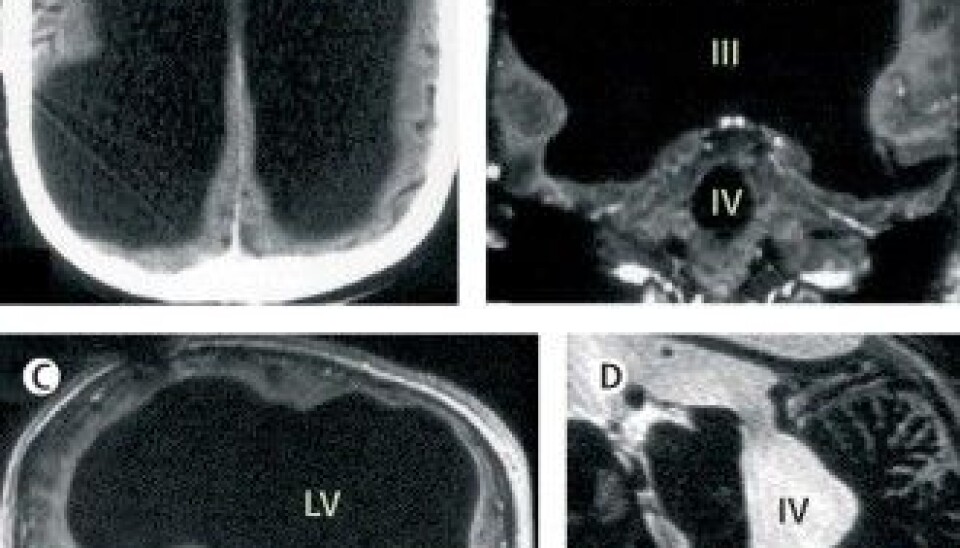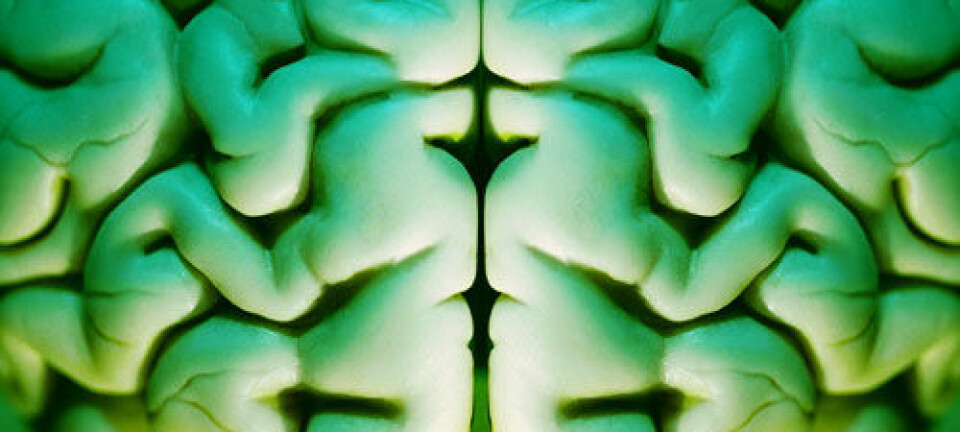
Can we blame the brain?
A Frenchman led a perfectly normal life for years, but a brain scan later revealed that his skull was nearly hollow. Neuroscientists use this as an extreme example of how misleading it can be to link brain images to behavior.
Denne artikkelen er over ti år gammel og kan inneholde utdatert informasjon.
A 44-year-old man, who led an ordinary life with a job and a family, once sought medical attention for a weak leg.
The doctors decided that he should take a brain scan. That’s when they discovered how little was left of his brain – it was hollowed out with ventricular enlargements.
The man was the inspiration for the article Brain of a white-collar worker, published in the medical journal The Lancet in 2007.
He was found to have a below-average IQ, scoring no higher than 84 on a verbal IQ test and 70 on a performance IQ test. Nevertheless, he functioned a lot better than could be expected with so little brain tissue.

“If a photo like that had landed in my hands without my knowing anything about the person, I’d have guessed the individual was nearly dead, says brain researcher Siri Graff Leknes, of the Department of Psychology at the University of Oslo.
“This is an extreme example illustrating that we can’t necessarily determine the functionality of a person from the appearance of their brain structure,” she says.
The limits of neural examinations
Leknes thinks it’s acceptable to use neural examinations and brain scanning techniques as part of diagnosing a patient or of a defendant in a trial when psychiatric issues are involved.
But at the same time she thinks their limitations should be known with regard to how an individual functions, for instance in the trial of the Norwegian mass murderer Anders Behring Breivik.
The forensic psychiatrists appointed in the Breivik case actually wanted him to undergo a brain scan.
“I just want to emphasise that our assessments wouldn’t provide a wholly significant or satisfactory answer in cases like the current one, and it’s obvious that psychiatry can’t provide a definitive answer either,” says Leknes.
Why use brain scans in trials?
But what could have been attained by means of a scanning of the July 22 terrorist’s brain?
Nils Erik Gilhus, neurology professor at University of Bergen, thinks it would be very risky to link judicial issues to any given imaging of a person’s brain responses.
“Almost whatever their brain looks like, a person has a choice between doing right or wrong. An MR image of the brain cannot indicate the fate of a person or whether he did whatever he did because of the brain’s appearance. This would be to deprive a person of their responsibility for their actions,” he says.
Criminals could say they lacked free will
Even if deviations were to be found in a person’s brain structure, forensic medicine would be hard pushed to determine any causal relationship between the way the accused person’s brain looked and whatever crime he or she committed, says Leknes.
“It might be tempting to think that irregularities or traces of damage to the brain caused the criminal action, but our measurements wouldn’t be able to prove any connection.”
Introducing such neural research into the judicial system could potentially become problematic if for instance you did detect a tumour in Breivik’s brain, treated it and shrunk it, she says.
“You could get scenarios where such things were exploited. Breivik could perhaps claim 'It was my brain that did it; the tumour caused the killings and the ideology – now all that is gone and I’m healthy and shouldn’t be punished.'"
Too much faith in neurological explanations?
Leknes believes that a legal argument in a courtroom could be granted too much significance and validity if it were supplemented with brain research.
In a research article in the Journal of Cognitive Neuroscience from 2008, scientists investigated the phenomenon among people who weren’t versed in neuroscience.
“This research showed that laypersons believe in explanations when you add a completely irrelevant sentence about the brain,” says Leknes
“I suspect that in a court of law there would be the danger of over-interpreting any findings about the brain of the defendant.”
More accuracy in the future
A neuroscientist cannot determine whether a person is psychotic from that person’s brain images.
But in the future researchers hope one of the things that will emerge would be the capability of differentiating between various types of schizophrenia through use of brain research techniques.
“In the long run we can conceive of being able to use this in diagnostics,” says Leknes.
“We might for instance go so far as to say: your brain response looks so much like others with this diagnosis that you should have this specific treatment now.”
-------------------------
Read the full story in Norwegian at forskning.no
Translated by: Glenn Ostling
Scientific links
- D. S. Weisberg, et.al. The Seductive Allure of Neuroscience Explanations. Journal of Cognitive Neuroscience. Vol. 20, nr. 3, 2008.
- L. Feuillet, et. al. Brain of a white-collar worker. The Lancet, 27.juli 2007.


































